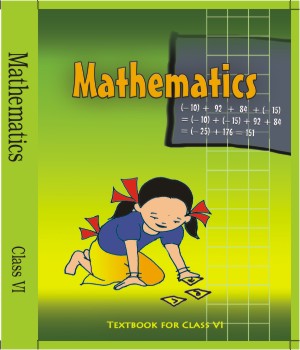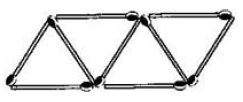Class 6 - Mathematics : Algebra
Exercise : 11.1

Top Block 1
NCERT Solutions Class 6 Mathematics Algebra
Question: 1. Find the rule, which gives the number of matchsticks required to make the following matchsticks patterns. Use a variable to write the rule.
(a) A pattern of letter T as
Mddle block 1
Answer :
(a) Pattern of letter
(b) Pattern of letter
(c) Pattern of letter
(d) Pattern of letter
(e) Pattern of letter
(f) Pattern of letter
(g) Pattern of letter
Question: 2. We already know the rule for the pattern of letter L, C and F. Some of the letters from Q.1 (given above) give us the same rule as that given by L. Which are these? Why does this happen?
Answer :
The letter ‘T’ and ‘V’ that has 2n pattern since 2 matchsticks are used in all these
letters.
Question: 3. Cadets are marching in a parade. There are 5 cadets in a row. What is the rule, which gives the number of cadets, given the number of rows? (Use for the number of rows)
Answer :
Number of rows = n
Cadets in each row = 5
Therefore, total number of cadets = 5n
Question: 4. If there are 50 mangoes in a box, how will you write the total number of mangoes in terms of the number of boxes? (Use for the number of boxes)
Answer :
Number of boxes = b
Number of mangoes in each box = 50
Therefore, total number of mangoes = 50b
Question: 5. The teacher distributes 5 pencils per student. Can you tell how many pencils are needed, given the number of students? (Use for the number of students)
Answer :
Number of students = s
Number of pencils to each student = 5
Therefore, total number of pencils needed are = 5s
Question: 6. A bird flies 1 kilometer in one minute. Can you express the distance covered by the bird in terms of its flying time in minutes? (Use for flying time in minutes)
Answer :
Time taken by bird = minutes
Speed of bird = 1 km per minute
Therefore, Distance covered by bird = speed x time = 1 x t = t km
Question: 7. Radha is drawing a dot Rangoli (a beautiful pattern of lines joining dots with chalk powder as in figure). She has 8 dots in a row. How many dots will her Rangoli have for rows? How many dots are there if there are 8 rows? If there are 10 rows?
Answer :
Number of dots in each row = 8 dots
Number of rows = r
Therefore, total number of dots in r rows = 8r
When there are 8 rows, then number of dots = 8 x 8 = 64 dots
When there are 10 rows, then number of dots = 8 x 10 = 80 dots
Question: 8. Leela is Radha’s younger sister. Leela is 4 years younger than Radha. Can you write Leela’s age in terms of Radha’s age? Take Radha’s age to be years.
Answer :
Radha’s age = x years
Therefore, Leela’s age = (x – 4) years
Question: 9. Mother has made laddus. She gives some laddus to guests and family members; still 5 laddus remain. If the number of laddus mother gave away is how many laddus did she make?
Answer :
Number of laddus gave away = l
Number of laddus remaining = 5
Total number of laddus she make = (l + 5)
Question: 10. Oranges are to be transferred from larger boxes into smaller boxes. When a large box is emptied, the oranges from it fill two smaller boxes and still 10 oranges remain outside. If the number of oranges in a small box are taken to be what is the number of oranges in the larger box?
Answer :
Number of oranges in one box = x
Number of boxes = 2
Therefore, total number of oranges in boxes = 2x
Remaining oranges = 10
Thus, number of oranges = 2x + 10
Question: 11. (a) Look at the following matchstick pattern of squares. The squares are not separate. Two neighbouring squares have a common matchstick. Observe the patterns and find the rule that gives the number of matchsticks in terms of the number of squares. (Hint: If you remove the vertical stick at the end, you will get a pattern of Cs.)


Answer :




If we remove 1 from each then they makes table of 3, i.e., 3, 6, 9, 12, ……….
So the required equation = (3x + 1), where is number of squares.




If we remove 1 from each then they makes table of 2, i.e., 2, 4, 6, 8, ……….
So the required equation = (2x + 1), where is number of triangles.
